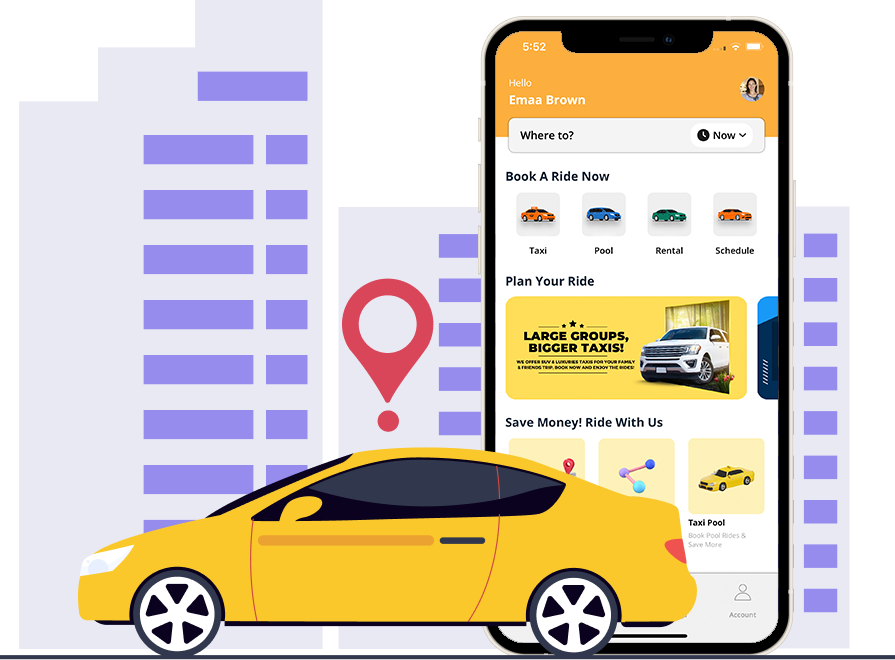In the ever-evolving world of digital technology, the on-demand economy has carved out a dominant space. From booking cabs to ordering food, from personal grooming to pet care—customers today expect instant services at their fingertips. Among the trailblazers of this revolution is Uber, whose success story has inspired a wave of entrepreneurs eager to tap into the on-demand market. But building an app from scratch can be time-consuming, expensive, and risky. That’s where an Uber Clone App steps in, offering the fastest and most efficient route to market.
The Rise of the On-Demand Economy
Consumer behavior has undergone a massive transformation over the last decade. People no longer want to wait for services—they want them now. This shift in expectations has paved the way for the on-demand economy, a market projected to reach over $335 billion by 2025.
From a business perspective, tapping into this industry promises rapid user acquisition, scalable models, and consistent demand. However, getting started is often the hardest part. Developing a platform like Uber requires not only a deep technical understanding but also a massive financial commitment and time. A smarter alternative is leveraging Uber Clone App Development, which allows entrepreneurs to hit the ground running with a tried-and-tested business model.
What Is an Uber Clone App?
An Uber clone app is essentially a pre-built application modeled on Uber’s functionality. It comes with core features such as user registration, real-time GPS tracking, driver and rider matching, fare calculation, payment gateways, and rating systems. These apps are customizable and scalable, making them ideal for startups and businesses looking to launch their own taxi or ride-hailing service.
Instead of reinventing the wheel, you can take a proven framework and tweak it to fit your brand and market. Whether you’re targeting a specific geographic region or a niche market (like rides for seniors, women-only rides, or eco-friendly options), a clone app offers the flexibility to build your identity while minimizing technical hurdles.
Why It’s the Fastest Route to Market
1. Reduced Development Time
Developing an app like Uber from scratch can take anywhere from 6 months to over a year. In contrast, Uber Clone App Development can get your app up and running within weeks. Pre-built modules mean developers only need to make custom adjustments, drastically cutting down on the time to market.
2. Cost-Efficiency
Building a custom ride-hailing app can cost upwards of $100,000. Uber clone apps, however, come at a fraction of the price. Since much of the backend work is already done, you only pay for customization, branding, and optional feature enhancements. This allows entrepreneurs to enter the market without blowing their entire budget.
3. Proven Business Model
Uber’s business model is one of the most analyzed and replicated in the startup world. It has already been proven to work across various regions and demographics. By choosing an Uber clone, you’re aligning with a framework that already has consumer trust, making it easier to acquire users and raise capital if needed.
4. Customizable and Scalable
Despite being based on Uber’s core structure, clone apps are highly flexible. You can add unique features, integrate third-party APIs, implement new payment options, or introduce gamification elements. As your user base grows, the app can be scaled to handle increased traffic and advanced analytics, giving you room to evolve.
5. Faster Market Validation
One of the biggest risks with a new app is market rejection. Since an Uber clone already incorporates UI/UX elements that users are familiar with, it reduces friction in user onboarding and usage. This makes it easier to validate your idea, gather feedback, and make improvements quickly.
Learning from Other Clone Models
It’s not just Uber that has inspired a generation of clone apps. For instance, Turo Clone App Development is gaining popularity in the peer-to-peer car rental space. Turo’s success has shown that people are open to renting out their vehicles, just like Airbnb revolutionized property rentals. The concept of cloning successful apps, customizing them, and launching into new or underserved markets is proving to be a winning strategy.
Choosing the Right Development Partner
While the benefits of an Uber clone app are numerous, the quality of your final product depends heavily on your development partner. Look for a team with experience in Uber Clone App Development, a portfolio of successful projects, and a collaborative approach to customization. Features you should expect include:
-
Real-time tracking and navigation
-
In-app wallet and multiple payment gateways
-
Push notifications
-
Dynamic fare calculation
-
Admin panel for managing users and drivers
-
Analytics and reporting tools
Security, scalability, and user experience should be top priorities. Additionally, ensure that the code is clean, well-documented, and easy to maintain or upgrade in the future.
Conclusion
The on-demand economy is booming, and the demand for convenient, tech-driven services shows no signs of slowing down. If you’re looking to capitalize on this trend, an Uber clone app offers a shortcut to success. It saves time, reduces costs, and gives you a proven business model to build upon.
In a competitive market, speed is everything. With Uber Clone App Development, you can leap ahead of the competition, attract early users, and start generating revenue without the lengthy and costly process of building from scratch.
So whether you’re an aspiring entrepreneur or an established business looking to diversify, now is the perfect time to ride the on-demand wave—and a clone app might just be your express ticket to success.






